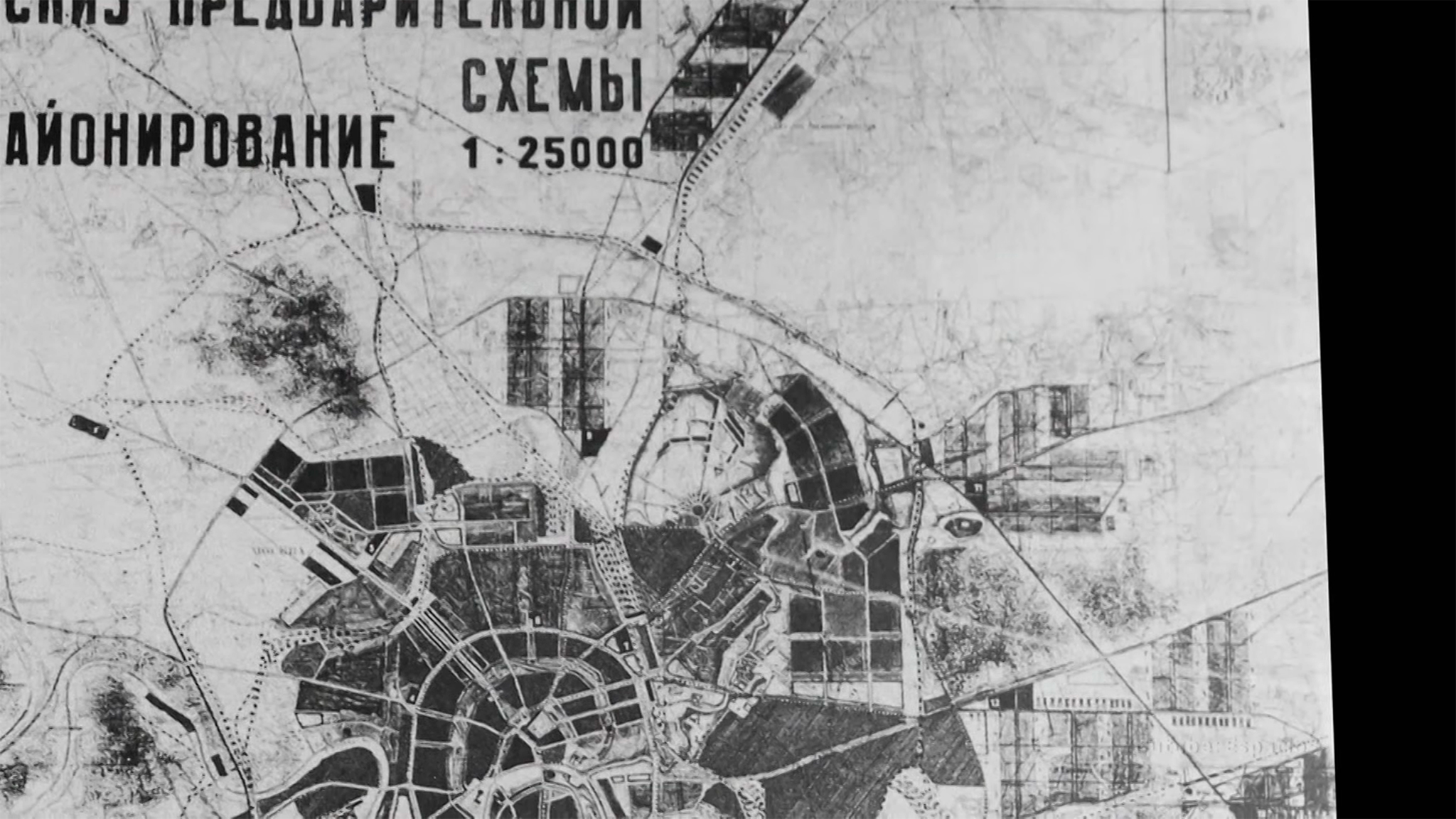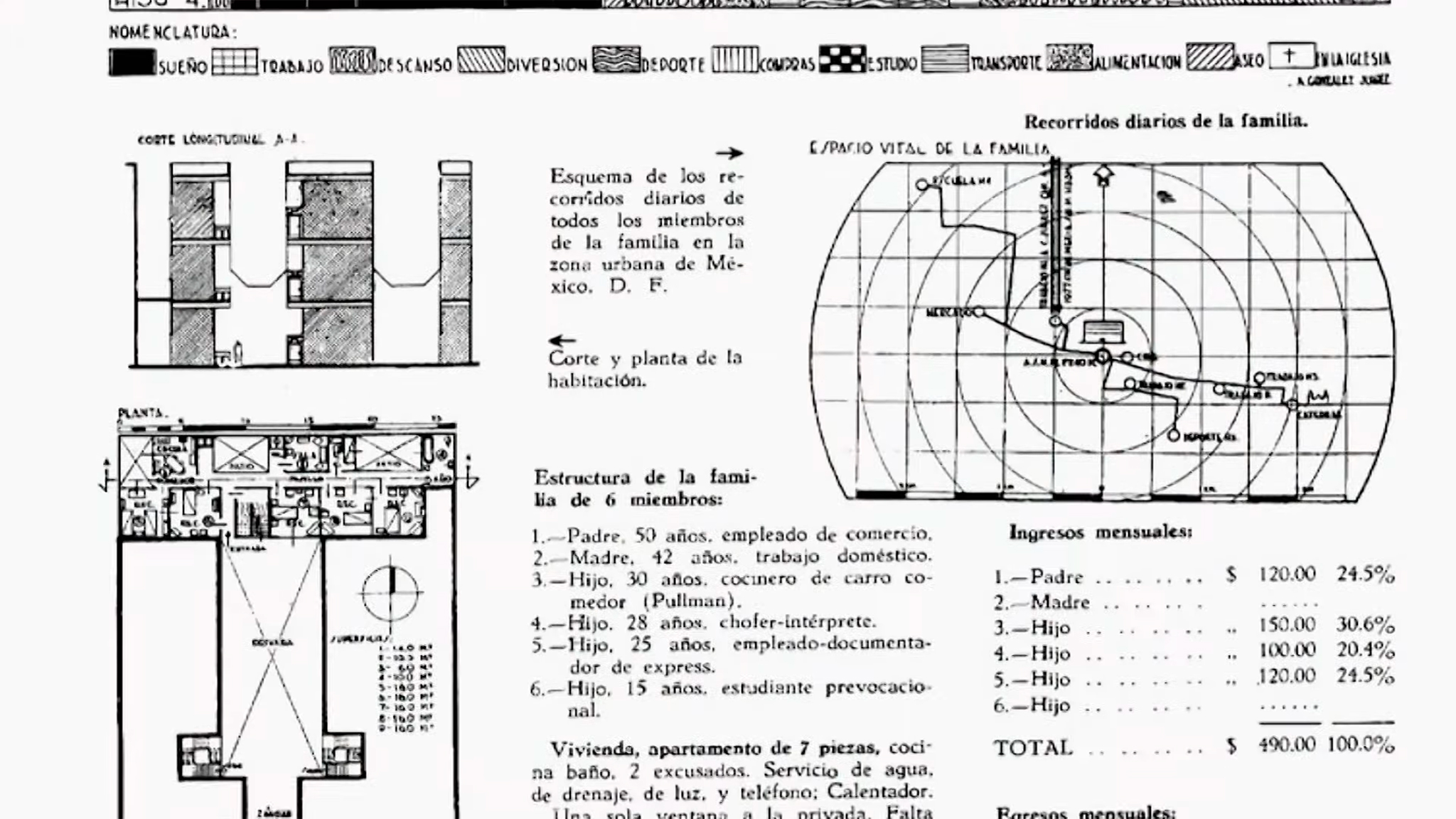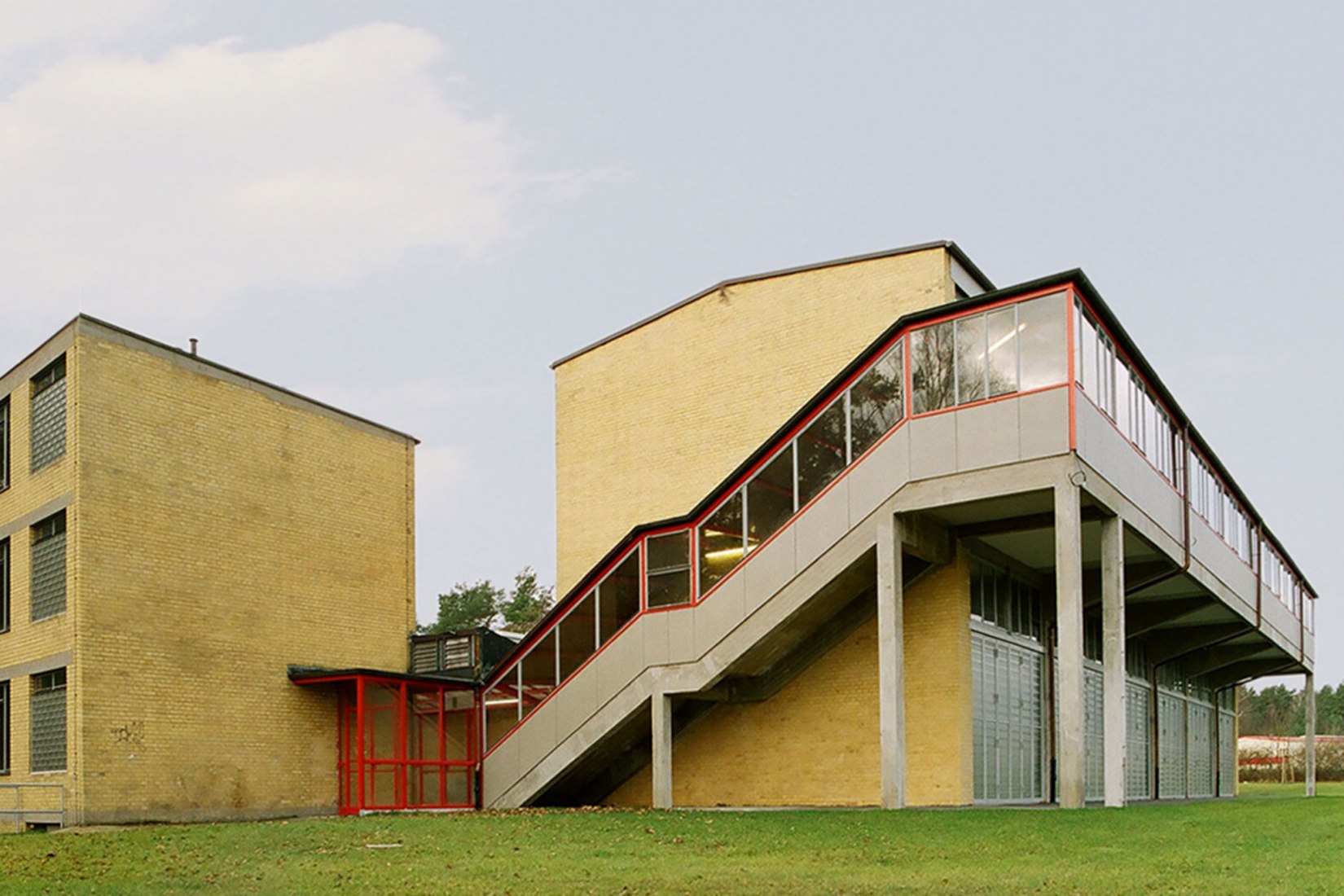Hans Emil Meyer was born in Basel, Switzerland, in 1889, in a family of architects. Raised in an atmosphere of Marxist ideas, his life and work were strongly influenced by his thoughts until the date of his death in 1954. He trained in a workshop, away from a college. His first relevant work was the Siedlung Freidorf, a cooperative project that tried to solve the needs of the working people.
Being already an architect, he appeared in different competitions with his partner Hans Wittwer. One of the projects that made more known was the primary school for women in Basel, Petersschule, 1926. The work stands out for its open spaces, with which sought a great brightness within the classroom. The project raises an interesting idea of raising the playground space on a large platform, which allowed the creation of a covered public plaza below it.
The project for the contest of the League of Nations in Geneva in 1927, despite not winning, became an important reference for the Bauhaus and became a constructivist icon.
Beginnings at the Dessau school
Meyer met Walter Gropius during the inauguration of the Bauhaus in Dessau in 1927. Interested in Meyer's abilities and character, Gropius invited him to take part in the architecture workshop of the Dessau school. Hannes accepted and joined the teaching team of the Bauhaus in the spring of 1927. He remained in school until 1930.
Initially, he was a teacher of the architecture section, and he took courses on general issues of architecture. The workshop did not have the expected reception, with a little less than 10 students per semester. Among its first students was the first woman from the Bauhaus to study architecture, Lotte Stam-Beese, with whom she would be romantically linked. During this period he published his previous projects in the Bauhaus magazine.
In a second stage, he was particularly interested in the projects that were presented at the school, in order to achieve a comprehensive training of students. He began a method of study in which he analyzed with his students plans that were not executed and constructions carried out. His colleague Hans Wittwer gave continuity to this procedure when Meyer was appointed director of the school.

Screenshot. Video. Hannes Meyer – der vergessene Direktor | 100 Jahre Bauhaus | SRF Kultur
Nombramiento como director de la Bauhaus
Barely a year and a half after his arrival at the Bauhaus, Gropius appointed him director of the school, after his first candidate, Mies Van Der Rohe, initially rejected the position. Thus, in 1928, Hannes Meyer became the second director of the Bauhaus.
His motto as director of the school was "the needs of the people instead of the luxurious needs". Meyer did not conceive of architecture as an artistic action and put the social nature of the discipline before ornamentation. This idea led to tensions with the teachers of the Bauhaus artistic area, such as Kandinsky, Klee or Schlemmer. The situation worsened when the projects of the students began to be commercialized, and as a result of a radical process of industrialization, the ornamentation was reduced to the minimum.
The income of the Bauhaus came mainly from the state. Gropius had already started a process of linking to the industry in order to become economically independent from the government, which was suffering a period of crisis when Meyer joined the school. The strategy was to provide products created in the same school to the upper classes.
Meyer initially continued with this system, although he was far from his political convictions. He ended up adapting it to his ideology, developing in his place collective and more anonymous projects, like the state school of the ADGM in Bernau in 1928, in which they participated to a greater or lesser extent of all the departments of the school. The authorship of this project, caused that the increasing tension between Witter and Meyer collapsed, ending in the abandonment of Witter from the school in 1930.
The production of items that went on sale grew between the periods of 1928 and 1929, while receiving more and more private orders and different campaigns. During the following year, productivity doubled, generating significant income for both the school and the students themselves.
Between 1928 and 1930, Hannes was in charge of the urban organization of Dessau, at the request of the same city. He proposed a project of orthogonal layout, in which he gave prominence to the basic needs of housing, which were affordable and functional.
In his change of focus for the Bauhaus, Meyer promotes the participation of political figures, finanaces, philosophy and economics, accentuating the development of social and ideological ideas linked to labor movements. As a consequence of his travels, Meyer assumed a representative role, giving lectures with titles such as "Construction and education", "The liberated architecture" and "The Bauhaus and society", focusing on the most social approach to architecture.
With this idea of transforming the teaching culture of the Bauhaus that made it different from other schools of the same order, Meyer sought external and internal support. His commitment to the social and construction process, facing issues that further enhance the artistic and ornamental character of Bauhaus architecture, won him a large number of internal opponents. It will be this group of teachers who ended up complaining to the government of Anhalt and the mayor of Dessau, and what led to Meyer's resignation in 1930.
Being already an architect, he appeared in different competitions with his partner Hans Wittwer. One of the projects that made more known was the primary school for women in Basel, Petersschule, 1926. The work stands out for its open spaces, with which sought a great brightness within the classroom. The project raises an interesting idea of raising the playground space on a large platform, which allowed the creation of a covered public plaza below it.
The project for the contest of the League of Nations in Geneva in 1927, despite not winning, became an important reference for the Bauhaus and became a constructivist icon.
Beginnings at the Dessau school
Meyer met Walter Gropius during the inauguration of the Bauhaus in Dessau in 1927. Interested in Meyer's abilities and character, Gropius invited him to take part in the architecture workshop of the Dessau school. Hannes accepted and joined the teaching team of the Bauhaus in the spring of 1927. He remained in school until 1930.
Initially, he was a teacher of the architecture section, and he took courses on general issues of architecture. The workshop did not have the expected reception, with a little less than 10 students per semester. Among its first students was the first woman from the Bauhaus to study architecture, Lotte Stam-Beese, with whom she would be romantically linked. During this period he published his previous projects in the Bauhaus magazine.
In a second stage, he was particularly interested in the projects that were presented at the school, in order to achieve a comprehensive training of students. He began a method of study in which he analyzed with his students plans that were not executed and constructions carried out. His colleague Hans Wittwer gave continuity to this procedure when Meyer was appointed director of the school.

Screenshot. Video. Hannes Meyer – der vergessene Direktor | 100 Jahre Bauhaus | SRF Kultur
Nombramiento como director de la Bauhaus
Barely a year and a half after his arrival at the Bauhaus, Gropius appointed him director of the school, after his first candidate, Mies Van Der Rohe, initially rejected the position. Thus, in 1928, Hannes Meyer became the second director of the Bauhaus.
His motto as director of the school was "the needs of the people instead of the luxurious needs". Meyer did not conceive of architecture as an artistic action and put the social nature of the discipline before ornamentation. This idea led to tensions with the teachers of the Bauhaus artistic area, such as Kandinsky, Klee or Schlemmer. The situation worsened when the projects of the students began to be commercialized, and as a result of a radical process of industrialization, the ornamentation was reduced to the minimum.
The income of the Bauhaus came mainly from the state. Gropius had already started a process of linking to the industry in order to become economically independent from the government, which was suffering a period of crisis when Meyer joined the school. The strategy was to provide products created in the same school to the upper classes.
Meyer initially continued with this system, although he was far from his political convictions. He ended up adapting it to his ideology, developing in his place collective and more anonymous projects, like the state school of the ADGM in Bernau in 1928, in which they participated to a greater or lesser extent of all the departments of the school. The authorship of this project, caused that the increasing tension between Witter and Meyer collapsed, ending in the abandonment of Witter from the school in 1930.
The production of items that went on sale grew between the periods of 1928 and 1929, while receiving more and more private orders and different campaigns. During the following year, productivity doubled, generating significant income for both the school and the students themselves.
Between 1928 and 1930, Hannes was in charge of the urban organization of Dessau, at the request of the same city. He proposed a project of orthogonal layout, in which he gave prominence to the basic needs of housing, which were affordable and functional.
In his change of focus for the Bauhaus, Meyer promotes the participation of political figures, finanaces, philosophy and economics, accentuating the development of social and ideological ideas linked to labor movements. As a consequence of his travels, Meyer assumed a representative role, giving lectures with titles such as "Construction and education", "The liberated architecture" and "The Bauhaus and society", focusing on the most social approach to architecture.
With this idea of transforming the teaching culture of the Bauhaus that made it different from other schools of the same order, Meyer sought external and internal support. His commitment to the social and construction process, facing issues that further enhance the artistic and ornamental character of Bauhaus architecture, won him a large number of internal opponents. It will be this group of teachers who ended up complaining to the government of Anhalt and the mayor of Dessau, and what led to Meyer's resignation in 1930.

Screenshot. Video. Hannes Meyer – der vergessene Direktor | 100 Jahre Bauhaus | SRF Kultur
Stay in Moscow
After finishing his work in the school of the Bauhaus in 1930, he left with other students expelled from the Bauhaus to Moscow, in order to continue their careers without their political ideas harmed them. Among these students, it is worth mentioning the presence of Lena Bergner, who would become the second wife of the Swiss. During his stay in the Soviet Union he did not have any built work, but together with former students, participated in the project of Stalin's five-year plan, developed between 1928 and 1932. Finally, the policy of closed doors of the Stalinist government, complicated Meyer's professional development, although he was granted a position as professor at the Moscow school. His step in the USSR ended in 1936, the year in which he returned to his native Switzerland, where he remained until 1939, when he accepted the invitation of President Lázaro Cárdenas to practice again in Mexico.

Screenshot. Video. Hannes Meyer – der vergessene Direktor | 100 Jahre Bauhaus | SRF Kultur
Estancia en México
In 1939 he left for Mexico, where he worked in various positions of public agencies as a technical advisor, and also as a professor at the Polytechnic School of Mexico, since he combined with his project work as an architect. However, it did not have work built in this country. The change of government in 1941 caused that again, it was forced to resign to the teaching position in the polytechnical school of Mexico. Among his work as an urban planner, highlight his work of planning the Lomas de Becerra in March 1942, or the Apple of Corpus Christi, in Mexico City in 1945, which relizó three proposals, but did not build any.
His stay in Mexico lasted 9 years, to finish returning to his native Switzerland in 1949, where he would devote to do theoretical work. Finally he died in the community of Crossifisso, in southern Switzerland in July 1954.





































